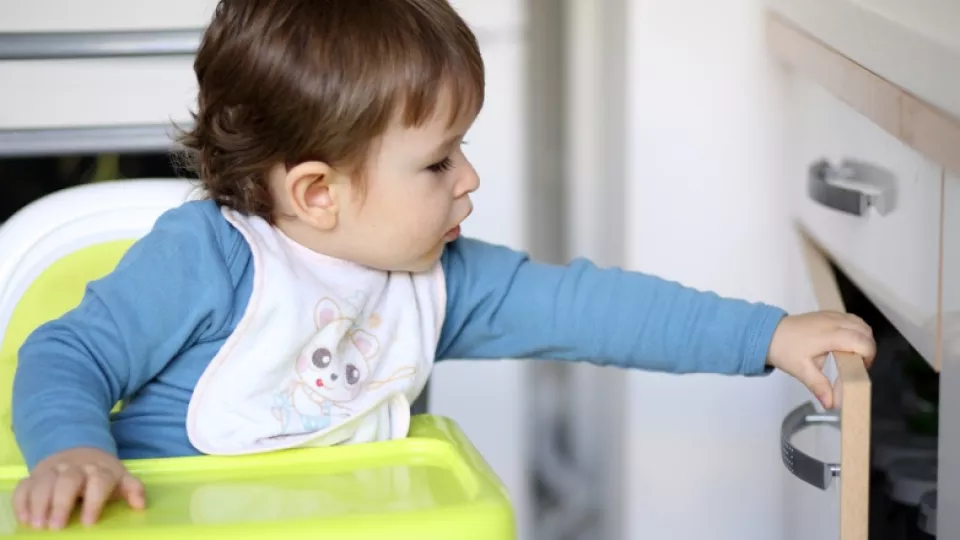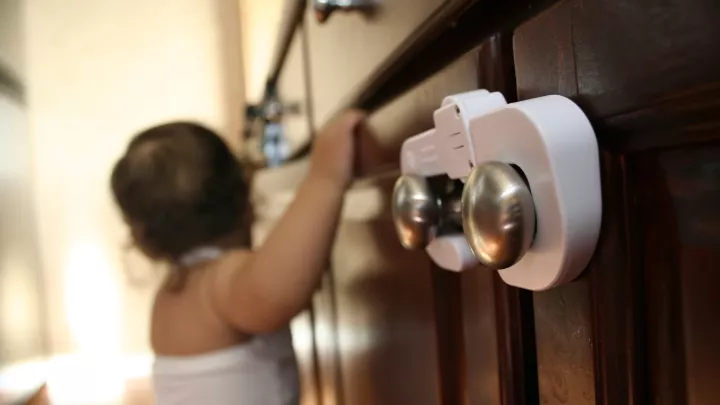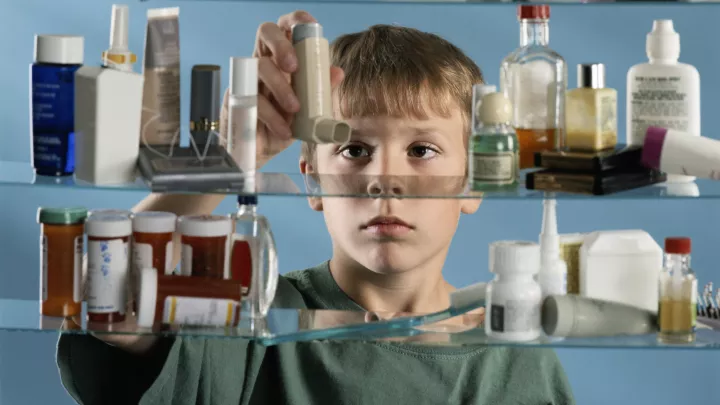
Guidelines for Keeping Your Child Safe at Home
It is in every parent’s interest to keep his or her children safe at all times. We tend to associate safety with areas in which we are most familiar, like our home, but did you know that about 4.5 million children are injured at home every year?
The house contains multiple objects that can cause injuries in children, such as toys, furniture, batteries, medicine, laundry products, hot and sharp objects, and anything that can lead to falls or suffocation.
The Injury Prevention Program at Children’s Hospital Los Angeles sees many families and patients who have come in for injuries suffered at home and helps to educate them. The parents always mention that they did not expect the injury to ever happen because they have eyes on their children at all times. Unfortunately, even to children of the most watchful parents, injuries sometimes only take seconds to occur. However, it is important to remember that they are preventable, and an easy key step is to childproof your house.
The Safety and Injury Prevention Program recommends these general tips to keep your child safe at home:
- Use gates to limit access to stairs, preventing falls.
- Secure all heavy and tall furniture to the wall.
- Do not place climbable furniture close to windows.
- Window blinds with dangling cords need to be shortened and those with looped cords must be cut. A tie-down device should also be installed.
- Outlet covers should be used when outlets are not in use.
- Install and maintain smoke and carbon monoxide alarms; change batteries.
- Secure all windows with locks. Screens are used to keep bugs out, not to keep children in.
- Electrical cords and sharp objects should be kept out of reach.
- For sharp corners on furniture, use corner cushions.
- Install cabinet locks where needed.
Although safety should be practiced in every room of the house, Injury Prevention team recognizes two particular locations in the home as “hot zones” for danger: the bathroom and the kitchen. These areas should remain off-limits and a child should not be present without supervision.
Here are some tips to keep your kitchen child-proofed:
- Keep handles of pots and pans toward the back of the stove.
- Use safety locks to secure oven doors and knobs.
- All sharp objects should be stored safely out of reach.
- Keep hot foods and liquids away from the edges of counters and tables; they should be out of reach.
- Use cabinet and refrigerator locks.
- All cleaning products should be stored in locked cabinets.
- Keep a fire extinguisher in room adjacent to the kitchen.
Similar tips are shared for the bathroom:
- Medicine and household products should be stored in locked cabinets.
- Use safety treads or a non-skid mat in the bathtub to prevent falls.
- Install locks on toilet lid.
- Install doorknob locks to prevent children from coming in unsupervised.
One important aspect of home safety is preventing falls, which are the leading cause of nonfatal injuries in children. Forty-three percent of all fall-related injuries happen to children 4 years old and younger. The majority of serious falls actually takes place at home, which is why caregivers must maintain a safe home and ensure house objects are secured. Here are some tips to prevent falls:
- Use safety straps to secure TVs and furniture to keep them from tipping over.
- Always secure children when they are in strollers, car seats, shopping carts, high chairs, etc.
- Windows shouldn’t open more than four inches, install window guards and stops on all windows above the first floor of your house.
- Keep furniture away from windows and lock all windows.
- Ensure your child plays on soft surfaces.
- Use gates to prevent access to stairs; place them at the bottom and top of the staircase.
- Never leave a child alone on a bed, changing table, or other furniture. Place your child on a blanket on the floor if you need to step away.
- Always keep sides of the crib up when your child is inside; lower the height of the crib mattress as the child grows. Discontinue crib use when top rails are less than three-fourths of the child’s height.
- Beware of toys and other objects that can be used as steps to climb over rails.
- Always maintain proper supervision at all times.
It is never too early to begin teaching children about their safety. Try to make it fun and help them identify dangers around the house by explaining that hazardous objects should always be avoided, such as: hot stoves, sharp objects, and anything that can cause harm. Starting these lessons early can help to keep children safe throughout their entire lives.
Visit our Injury Prevention vending machines at different locations of the hospital (Safety Corner next to the HBO café and next to the Bank of America ATM) for home-safety products at wholesale prices.


